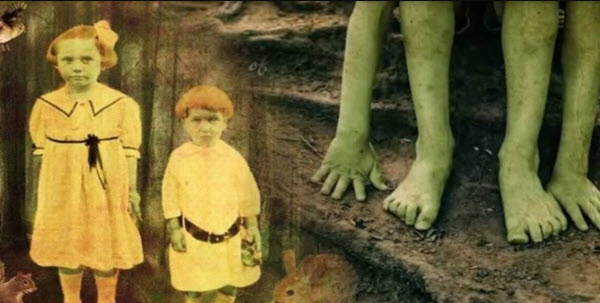The United Kingdom is filled with countless rural villages, but only a few have garnered widespread fame—whether due to being the birthplace of a famous figure or witnessing an event that captured national attention. One such village is Woolpit, an ancient English village tied to a very strange story that remains a subject of debate to this day. Some believe it to be true, while others dismiss it as mere folklore. The tale is known as “The Green Children of Woolpit,” and its roots go back to the 12th century when two children, a boy and a girl, with peculiar green skin, appeared in the village. Their arrival sparked intrigue, and their claim to be from a magical place called St. Martin’s Land—a twilight-shrouded underground world where the inhabitants subsist solely on green beans—added further mystery.
The story of the Green Children of Woolpit begins when the children emerged from one of the village’s old wolf pits, deep traps designed to capture dangerous wolves. Discovered by a local farmer, the children were taken to the village, where Sir Richard de Calne offered them a home. The villagers, curious yet kind, took them in as their own. Initially, the children refused to eat anything other than green beans. Over time, they adjusted their diet, and their green skin began to fade. Tragically, the boy became depressed and soon passed away. The girl, however, survived and gradually learned English. She then recounted the story of their mysterious homeland, a place called “St. Martin’s Land,” where everything was green, and the people lived underground in a perpetual twilight.

The girl claimed that she and her brother were tending their father’s cattle when they heard a loud noise and suddenly found themselves at the bottom of a wolf pit in Woolpit. Another version of the tale suggests that the children followed the cattle into a cave, got lost, and were lured out by the sound of church bells. Regardless, they found themselves in Woolpit, far from their homeland. The girl grew up in the village, losing her green hue over time. She reportedly became somewhat rebellious, and it’s said that she married a royal ambassador, possibly taking the name Agnes Barrie.

The tale of the Green Children of Woolpit is undoubtedly bizarre and mysterious. Its primary sources are two chroniclers, Ralph of Coggeshall and William of Newburgh, though neither had direct contact with the green children. Ralph, the sixth abbot of Coggeshall Abbey, lived near Woolpit and heard the story many times from Richard de Calne. William of Newburgh, a monk and historian, claimed to have gathered the story from numerous credible sources. Over time, people have tried to make sense of the tale, proposing various explanations, some grounded in science and others veering into the supernatural.
For those who lean towards supernatural explanations, the children’s claim of living underground led to theories that they might have been elves or fairies from another realm, or even aliens who had crossed into our world through a dimensional portal. Their green skin further fueled these fantastical ideas. However, skeptics argue that there’s a more rational explanation rooted in medical conditions. One theory suggests the children were poisoned by arsenic and abandoned in the woods, with their green skin being a side effect of the poisoning. Another possibility is that they were Flemish refugees who had been displaced during the Battle of Fornham in 1173, when Flemish immigrants were persecuted. They may have wandered from the nearby village of Fornham St. Martin, following the sound of church bells, before ending up in Woolpit.

The most widely accepted and scientifically plausible theory is that the children suffered from a condition known as hypochromic anemia, which can cause the skin to take on a greenish tint due to a lack of proper nutrition. This condition, once referred to as “chlorosis,” was named by French physician Jean Varandal in the early 17th century, derived from the Greek word “chloris,” meaning greenish-yellow. It’s therefore likely that the Green Children of Woolpit were simply malnourished, living a primitive and secluded life, perhaps in underground caves or dense forests that dominated England at the time. Such a harsh environment would naturally lead to a poor diet, which could explain their strange appearance.
In the end, the story of the Green Children of Woolpit remains a captivating blend of history, mystery, and speculation, still leaving room for both scientific inquiry and imaginative interpretation.
